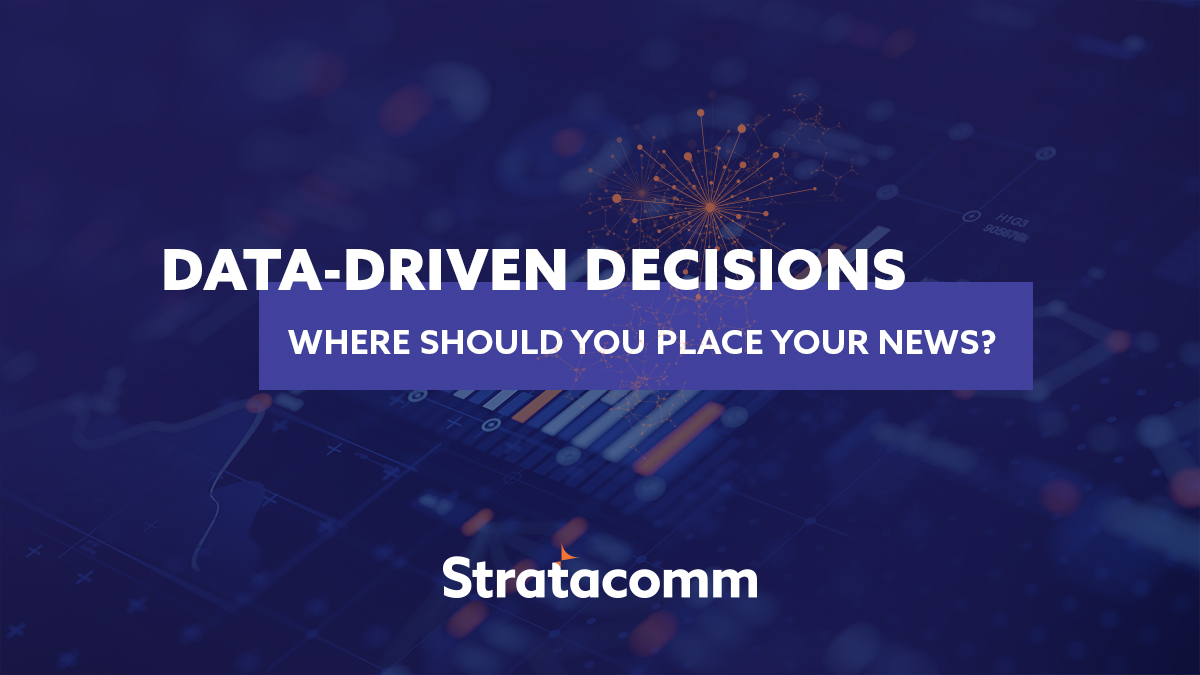I checked into a hotel late one evening and spotted a stack of newspapers from earlier that day. Somewhere between eight and 10 papers neatly piled, and few (if any) touched since they were placed there that morning.
It wasn’t that long ago that securing a newspaper front page or a magazine cover was considered the ultimate success in media relations. While those are still considered substantial wins, nowhere near as many consumers see those placements today as they would, say, 20 years ago, when the aforementioned newspapers would all be gone by midmorning. The way consumers intake their information has changed dramatically since the dawn of the internet and is moving faster than ever, yet traditional channels remain an important consideration in any PR or advertising campaign.
Stratacomm heavily depends on data to customize projects when planning outreach for a campaign, understanding that no two campaigns are the same. Recent Pew Research Center findings suggests that more than half of Americans prefer to get their news from digital devices, with just a third seeking television programming for news. And while social media is a growing source for news, news websites and apps are the source.
Conventional wisdom might suggest that younger audiences are almost exclusively on social media and that older consumers only get their information from traditional media sources. That argument does hold some water but it’s not as binary. Recent survey data from MRI Simmons shows interesting trends that are worthy of further discussion when building a media list for a PR launch or buying advertising for a campaign.
Takeaways from four surveyed age groups that might surprise you:
- 18-34 years old
- 45% listen to traditional AM/FM radio
- 70% get information from print or online magazines
- 52% watch television using streaming services exclusively
- 35-49 years old
- 10% watch TV but do not use any streaming services
- 16% more likely to use Instagram than the general public
- 31% do not read print or digital news
- 50-64 years old
- 55% use both cable television and streaming television
- 29% more likely to use Nextdoor than the general public
- Spend on average four hours per day online
- 65+ years old
- 31% get their news from newspapers – almost double that of the 50-64 age range
- 19% watch streaming television exclusively
- Top reason to go online is to make a purchase
An additional factor gaining traction is outreach to news channels and video creators using YouTube. Now recognized as the internet’s second-largest search engine, the platform has an estimated 2.6 billion monthly users. Of those, 246 million are in the U.S. and 62% access the platform daily. The average user spends just short of 20 minutes streaming video content daily. YouTube’s audience does skew on the younger side, but there are still substantial viewership numbers across all age ranges.
All these options fragment where to place your dollars and your outreach efforts. While securing a front page above-the-fold media placement was once the holy grail, the silver lining is the increased opportunity for better audience targeting – and we’ll take that.
Stratacomm provides earned (public relations) and paid media (advertising) support for many of our clients. Connect with us today to learn more about how we can help reach your target customers where they are consuming media. This article is written by Steve Diehlman who is a vice president at Stratacomm with a passion for understanding how the world learns and admittedly spends way too much time laughing at dumb videos on social media.

